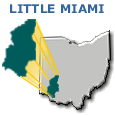RUSLE K Factor Metadata

GEODATASET NAME: LMR_USLEK2
IDENTIFICATION INFORMATION
Description:
K factor (erodibility factor) for the Little Miami River watershed
estimated from Universal Soil Loss Equation (USLE) Using STATSGO
Abstract:
USLE K-factor coefficient times 100 for Little Miami River, as
estimated from STATSGO soil map unit coverage, USLE Handbook, and
other sources.
Data Type:
Grid
Data Originator:
USDA Natural Resources Conservation Service
National Cartography and GIS Center
P.O. Box 6567
Fort Worth, TX 76115-0567
(817)334-5559
Data Processor:
Rick Van Remortel
Lockheed Martin Environmental Services
980 Kelly Johnson Drive
Las Vegas, NV 89119
(702)897-3295
rvanremo@lmepo.com
Data Provider:
Bernie Daniel
U.S. Environmental Protection Agency
National Exposure Research Laboratory
26 W. Martin Luther King Dr. MS-785
Cincinnati OH 45268
(513)596-7401
daniel.bernie@epamail.epa.gov
Keywords:
soil erosion, erodibility, USLE, K factor
Version:
N/A
Status:
Interim
Revision Number:
0
Series Name:
Online Link (URL):
Time Period of Content: from Dec. 1994 revision
Use Constraints:
Users are cautioned against treating the K factor values as point data
specific to a given location on a landscape. The K factor grid was
developed by area-weighting the array of individual STATSGO soil
components within a series of soil map units delineated within each
state, then joining the states to the EPA region level. STATSGO is a
state-level database. As such, the specific K-factor value of a given
point on the landscape cannot be known with certainty because the
distribution of soil components within each map unit is variable
across a state. Finer resolution data can be derived from the SSURGO
database (for soil survey areas) where such data have been released by
NRCS. However, SSURGO data are only more resolute and still do not
provide point-specific data. Caution must be exercised with the
interpretations drawn from STATSGO and SSURGO applications. The present
version of this grid should be considered Draft, for internal use only at
this time.
Purpose:
Regional erosion modeling in GIS
Date of metadata entry/update:
06/12/2000
No Publication Information Available
No File Security Information Available
DATA QUALITY INFORMATION
Cloud Cover:
Not applicable
Software:
Arc/Info 7.2
Operating System:
Unix
Path Name:
/gis8/l_miami/data/soil/lmrusle_k2
Logical Consistency Report:
Not presently available
Completeness Report:
Not presently available
Horizontal Positional Accuracy:
Not presently available
Vertical Positional Accuracy:
Not presently available
Attribute Accuracy:
Not presently available
Procedures:
The K-factor grid, because of file storage considerations, was modified
from floating point to integer storage and therefore carries with it an
expansion coefficient of 100 that must be applied as a denominator to
the grid value data to put the K-factor in proper units. For example,
a K-factor of '0.32' became a grid value of '32' with an expansion
coefficient of 2 orders of magnitude (100). This K-factor grid is one
of five USLE factor grids that are multiplied together and divided by a
grand expansion coefficient to calculate the A-value for estimated soil
erosion. The Little Miami River watershed boundary was used as a mask
during the processing. The basic procedure for calculating USLE was
developed by Weischmeier and Smith (1978).
Reviews Applied to Data
Lockheed Martin internal review
Related Spatial Data Files:
All geodatasets with _usle_ or _rusle_ root.
Other References Cited:
Wischmeier, W.H., and D.D. Smith. 1978. Predicting Rainfall Erosion
Losses: A Guide to Conservation Planning. USDA Handbook No. 537.
U.S. Department of Agriculture, Washington, DC.
Notes:
Update Frequency:
As needed
SPATIAL REFERENCE INFORMATION
Description of Grid lmr_uslek2
Cell Size = 30.000 Data Type: Integer
Number of Rows = 3919 Number of Values = 13
Number of Columns = 2248 Attribute Data (bytes) = 12
BOUNDARY STATISTICS
Xmin = 984724.688 Minimum Value = 0.000
Xmax = 1052164.688 Maximum Value = 43.000
Ymin = 1828894.625 Mean = 37.810
Ymax = 1946464.625 Standard Deviation = 4.167
COORDINATE SYSTEM DESCRIPTION
Projection ALBERS
Datum NAD27
Units METERS Spheroid CLARKE1866
Parameters:
1st standard parallel 29 30 0.000
2nd standard parallel 45 30 0.000
central meridian -96 0 0.000
latitude of projection's origin 23 0 0.000
false easting (meters) 0.00000
false northing (meters) 0.00000
ENTITY AND ATTRIBUTE INFORMATION
Annotation Name:
ATTRIBUTE LISTING FOR: lmr_uslek2.vat
COLUMN ITEM NAME WIDTH OUTPUT TYPE N.DEC ALTERNATE NAME INDEXED?
1 VALUE 4 10 B - Indexed
5 COUNT 4 10 B - -
9 K_FACTOR 4 4 N 2 -
METADATA REFERENCE SECTION
FGDC Content Standards for Digital Geospatial Metadata
FGDC Standards Version 6/98 / metadata.aml ver. 1.3 5/21/99
SUPPLEMENTAL METADATA (where available)
Abstract:
The Universal Soil Loss Equation (USLE) and its derivative the
Revised (RUSLE) model are designed to predict
long-term average annual soil loss. USLE was developed primarily for
agricultural situations, but revisions for RUSLE have been more widely
applied. The equation is based on the concept that rainfall patterns
across a region set up characteristic erosion conditions that are
mitigated or exacerbated by soil type, slope, and land cover conditions.
The basic equation is: A = R * K * LS * C * P
where A is long-term average annual soil loss (tons/acre/year), R is
the rainfall erosivity factor, K is the soil erodibility factor, LS is
the length-slope factor, C is cover and management factor, and P is
the support management factor (e.g., strip cropping, buffer-strip
cropping). Over the eastern U.S. R ranges between 75 and 450, and
the other factors typically range between 0 and 1. Conceptually, USLE
estimates soil erosion as a reduction in potential erosion from rainfall
due to soil, slope, and land cover characteristics.
Soil erodibility factors (K) are estimated as part of the Natural
Resources Conservation Service (NRCS) digital STATSGO soils data base.
The basic mapping unit of STATSGO soils is associated phases of soils
series. Each soil series typically has a unique K factor. The K factor
for each map unit was calculated as an area-weighted average of its soil
components.

![[logo] US EPA](../gif/logo_epaseal.gif)